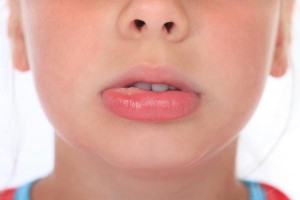
The causes for anaphylactic shock vary greatly and often a reaction develops after years of consuming a particular food in the normal diet. The body all of a sudden becomes sensitive and sees the source of the anaphylactic shock as a threat to the system. It no longer tolerates the anaphylactic shock causing substance and in defence floods the body with histamines to attack the source of the threat.
The body usually reacts to the threat causing substance within minutes of it being consumed and can last anything between 5-10 minutes up to 1-6 hours depending on the severity of anaphylactic shock. It has been recorded that each attack of anaphylactic shock seems to have a greater severity than the previous one and can last longer.
Asthmatic and atopic eczema suffering children are said to be the highest risk group to develop and suffer an episode of anaphylactic shock, so monitor these children carefully for signs and symptoms of anaphylactic shock.
All persons who have regular contact with your child or children should be aware of the anaphylactic shock and the cause if known, they should also be trained regularly in how to recognise the signs and symptoms of anaphylactic shock and administer first aid if and when required. The anti-allergy pen can be a worry concerning injuring the child and regular training will reinforce the importance of administering the injection.
Common causes of anaphylactic shock in children are:-
- Nuts, especially peanuts
- Insect stings (bees and wasps)
- Milk
- Shellfish
- Some anti-biotics
Less common causes of anaphylactic shock are:-
- Eggs
- Other types of nuts
- Fruits including banana, strawberries and grapes
- Latex
Signs and Symptoms of Anaphylactic Shock
Anaphylactic shock mild
- Tingling in the mouth or lips (pins and needles)
- Swelling or numbness of the tongue, lips or face
- Swelling of the hands or feet
- Raised rashes on the skin

Anaphylactic shock severe
The symptoms above are the same to begin with, but they very quickly become more severe if anti-allergy medication has not been administered or if the anti-allergy medication has not worked. Monitor the person vigilantly and look for:-
- Tingling in the mouth or lips (pins and needles)
- Swelling or numbness of the tongue, lips or face
- Swelling of the hands or feet
- Raised rashes on the skin
- Difficulty breathing
- Wheezing
- Dizziness
- Loss of consciousness
Failure to recognise these symptoms in a child with anaphylactic shock could lead to hospitalisation or even their death in some extreme cases.
Treatment of Anaphylactic Shock

The treatment of anaphylactic shock can vary depending on the severity of the condition. Most children diagnosed with anaphylactic shock should be carrying on their person at all times an anti histamine pill and an adrenaline shot of anti-allergy medicine.
In the most common cases the anaphylactic shock is mild and symptoms are a nuisance, but tingling lips and mouth for example can be stopped by taking an anti histamine, which the child should be carrying on their person.
In more severe cases of anaphylactic shock the symptoms quickly worsen and the anti-allergy medication needs to be given. Normally the anti-allergy medication is an inter muscular injection and fast-acting.
To administer the anti-allergy inter muscular injection you must remove the seal from the medication and stab the anti muscular injector straight through the clothing into the upper thigh, you hold the injection firmly and steadily for at least ten seconds before removing.
Prevention and avoidance of triggers is usually the best cure for anaphylaxis shock and if you can identify the cause of anaphylactic shock then be sure to take every precaution to avoid this coming into contact with the body.
Peanut Allergy

The peanut allergy is one of the most widely associated allergen causing anaphylactic shock and can be one of the most fatal as the consumption of the peanut triggers the anaphylactic shock almost instantly. One thing to bear in mind with the peanut allergy is also the handling of allergens and airborne contanct with the allergen, for example a child could be touching the peanuts and several hours later if the hands have not been washed inadvertantly injest the allergen and in severe peanut allergy cases the child may only have to smell the scent of a peanut to trigger the anaphylactic shock.